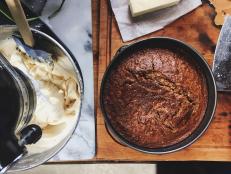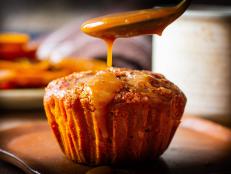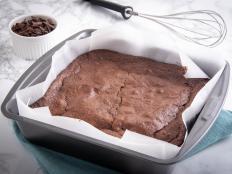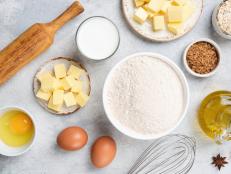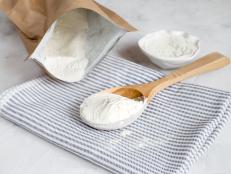What Is Pre-Sifted Flour? And How to Measure It
Some bags of flour have a pre-sifted label on them. We get into what exactly this means – and, more importantly – whether you have to sift again.

Gpointstudio/Getty Images
By Jessie Sheehan for Food Network Kitchen
Jessie Sheehan is a baker and cookbook author.
Today, most flour is pre-sifted – regardless of whether the bag is specifically labeled as such or not. In the off chance that it’s not pre-sifted, you can rest assured that it’ll be finely ground and smooth because the modern-day flour-making technique is more sophisticated than it once was. Earlier techniques left flour much less smooth, and thus sifting was mandatory to ensure consistent results when baking. That’s why older recipes typically always call for sifting flour. But if the flour in your bag is already sifted, how come recipes today sometimes ask you to do it again? And do you actually need to? Moreover, if sifting aerates flour, is pre-sifted flour that’s been sitting in its bag for several months still aerated? Great questions and (lucky you) we’ve got some answers.
What Does Sifting Flour Do?
Sifting flour removes its little clumps and lumps. The process aerates the flour and ideally insures that despite differences between one flour company’s product versus another’s, once sifted, all flour will behave the same no matter its origins or the recipe for which it is used. Pre-sifting levels the flour playing field up to a point (though not between flours with different protein levels, bleaching processes, etc.).

Lucy Lambriex/Getty Images
Is All-Purpose Flour Always Pre-Sifted? What about Cake Flour?
Typically, all-purpose flour is pre-sifted, but if the packaging doesn’t say, you can’t be 100% sure.
Cake flour is not typically sold pre-sifted. And interestingly enough, it is the one flour that requires sifting. Cake flour is much finer than all-purpose and easily clumps up while in its bag and even when transferred to a flour cannister at home. Because of this, we always recommend sifting cake flour before using it.
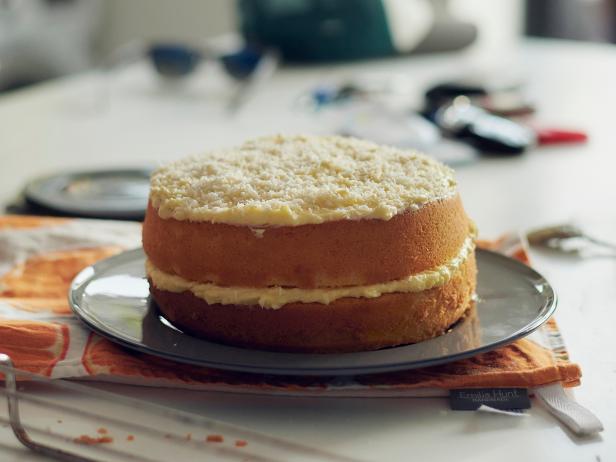
BARTON/Getty Images
Do I Have to Sift Pre-Sifted Flour When a Recipe Calls for Sifting?
The short answer is . . . maybe. Not what you wanted to hear; we know.
If it’s a recipe for a cookie or a muffin, you can 100% skip sifting (and truthfully, it’s unlikely a recipe for either would ever require it). It is a good idea to fluff up your flour though, with a fork or even a whisk, right in the bag or cannister, in an effort to aerate it.
But if it’s a recipe for a light and airy cake with a delicate batter, like an angel food cake or a Genoise sponge, then it is a good idea to sift even pre-sifted flour. This is because flour often settles in its bag – it doesn’t necessarily develop lumps, but it will get quite compacted, making it easy for you to mismeasure.
How Do I Measure Pre-Sifted Flour?
Measuring pre-sifted flour is no different than measuring regular flour. You first want to aerate the flour in case it has settled in its bag or cannister. You can do this with a whisk or even a fork directly inside its container – no need to pour it out into a bowl or anything. Then you can either spoon the flour into your measuring cup and then level it off with the back of a butter knife, or, provided you’ve really well aerated it, gently plunge your cup right into the bag/cannister and level off from there.
Do I Need a Special Tool to Sift Flour?
You can easily sift flour in a fine-mesh wire sieve, like the kind that you might use to strain spaghetti or wash berries. But you can also purchase a special tool, usually metal, that is designed specifically for flour sifting. It is shaped like a large cup and it has a handle on one side and a fine-mesh strainer covering its bottom.
Related Links:


























.jpg.rend.hgtvcom.231.174.suffix/1681323015319.jpeg)
